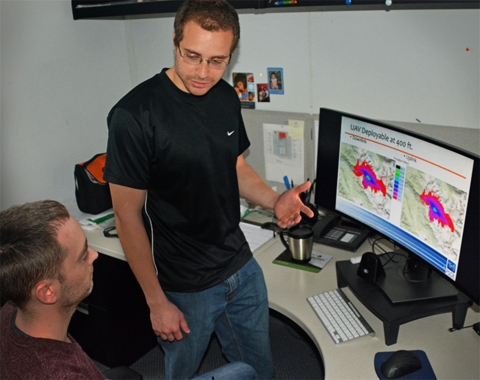
WHAT WE DO
Our work on next generation wireless communications impacts all of CTL’s core programs: Public Safety Communications, Fundamental Metrology for Communications, Trusted Spectrum Testing, NextG (5G & Beyond) and Open RAN. We also lead the NextG Channel Model Alliance, a nexus for global efforts to develop the future radio channels over which 5G and next-generation wireless networks will operate at data rates up to a thousand times greater than what is possible today. Our diverse portfolio of work is possible thanks to an extensive collaboration network in the form of key partnerships within NIST and across industry, government, and academia.
AREAS OF EXPERTISE
CTL’s Wireless Networks Division specializes in two areas of wireless technology research and analysis:
- Communications networks and protocols, which involves data transport, routing, resource management, medium access control, and security.
- Digital communications, which looks at the essential technologies enabling communications networks, including signal processing, modulation, error control coding and channel modeling.
Across both of these competence areas, we apply our capabilities in performance measurements, model development, experimental testbeds and network prototyping.
MODELING & SIMULATION
Accurately characterizing the environments in which future network hardware and protocols will operate is a vital precursor to wireless network modeling and protocol development. Such modeling ultimately helps the industry identify potential cost-savings and sets realistic expectations for network coverage, capacity, scalability and performance.
Our channel modeling work employs existing and custom models applying mathematical analysis and computer simulation to factors affecting radio-frequency propagation such as environment characteristics, mobility, antenna height, and center frequencies. We work with CTL’s RF Technology Division in developing and enhancing channel sounders capable of completely characterizing channels operating at the high frequencies expected to be used in NextG systems. Our channel modeling experts use the measurements obtained from these sounders as inputs for their models.
Subsequently, our systems engineers integrate the developed channel models into system-level simulators to develop, evaluate, and characterize the performance of new protocols and architectures.
EXPERIMENTAL TESTBEDS
While much of our work involves mathematical modeling and computer simulation, our experimental testbeds help us validate our models, develop benchmarks and take physical measurements of wireless systems and their key components. We start with commercial broadband devices (e.g., 5G NR base station and user equipment), protocol analyzers and emulators, which provide a highly controlled, non-radiating environment to characterize how high-speed wireless devices transmitting over multiple channels in different environments might interact. But when our requirements push past the boundaries of what’s commercially available, we develop our own solutions, such as our real-time spectrum monitoring system and Open RAN testbed using software-defined radios.

STAKEHOLDERS OUTREACH
As part of our program planning activities, we continue our industry and stakeholders outreach in order to identify additional measurements and metrology R&D gaps in support of the development of wireless communication systems and standards.
NIST’s Communications Technology Laboratory has partnered with the National Science Foundation (NSF) to identify technical gaps critical to the sustained innovation of post-5G wireless systems. This project completed with the publication of NIST SP 1293.
Please visit the NextG Gap Analysis page for additional details.
SELECTED PUBLICATIONS
PROJECTS AND PROGRAMS
- Ongoing
- The realization of this long-term vision requires tackling key technical challenges to allow for greater temporal, spectral, coding and spatial resource efficiency. As well, these technologies all rely on high levels of electronic device integration, yielding a radical new connectorless measurement
- Ongoing
- Background In recent years the threat of DDoS) attacks on the Internet seems to be significantly increasing. The rapidly growing threat can be characterized by the orders of magnitude increases in the bandwidth of such attacks (from 100s of millions bits per second, to 100s of billions bits per
- Ongoing
- The US Government, and the Department of Commerce in particular, has identified the development and commercialization of Open Radio Access Network (O-RAN) technologies as a strategic priority in the evolution of next-generation wireless networks and a key enabler for the US IT industry to increase
- Ongoing
- Automated vehicles (AVs), or Automated Driving Systems-equipped (ADS-equipped) vehicles, have great potential to improve our lives by freeing us from the stress of driving and reducing accidents caused by distractions or poor judgement. Connected, reliable, and safe AVs will spark significant




